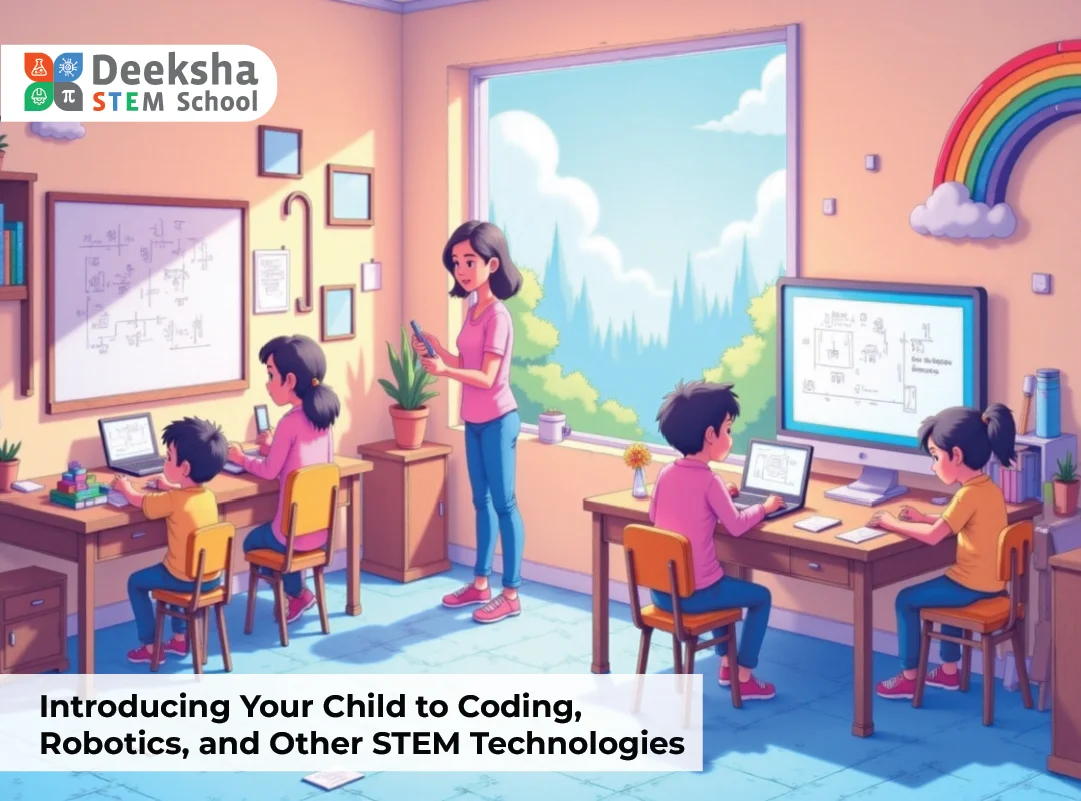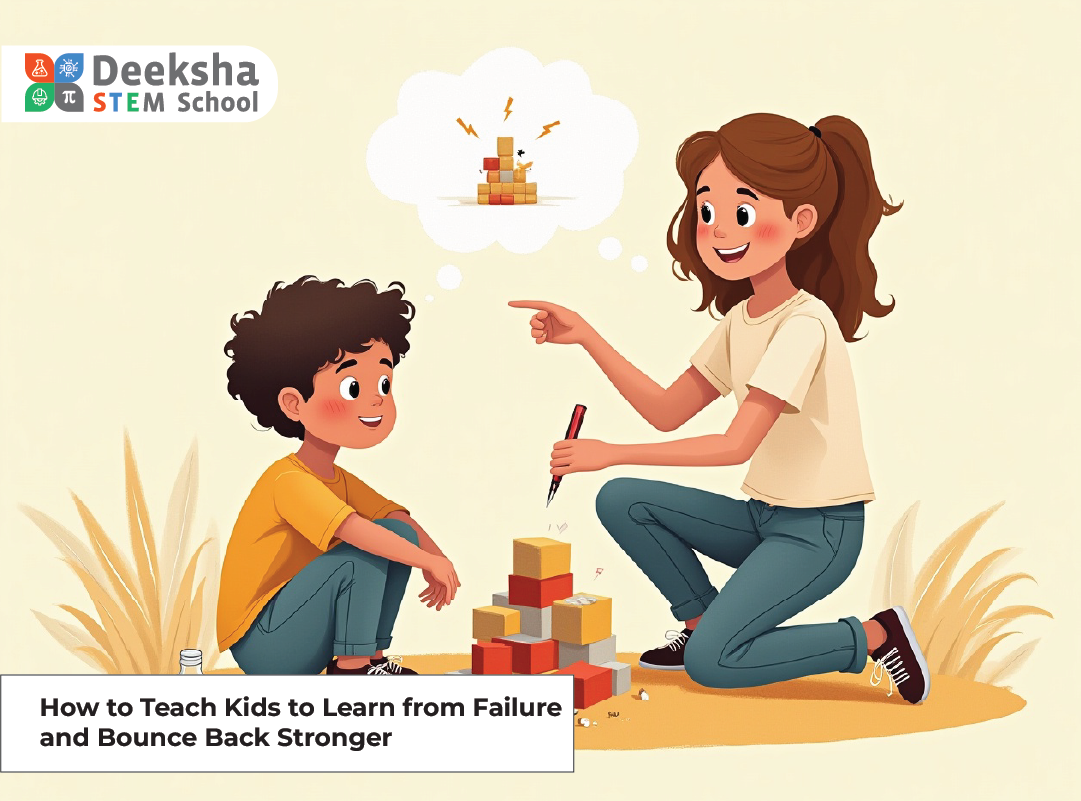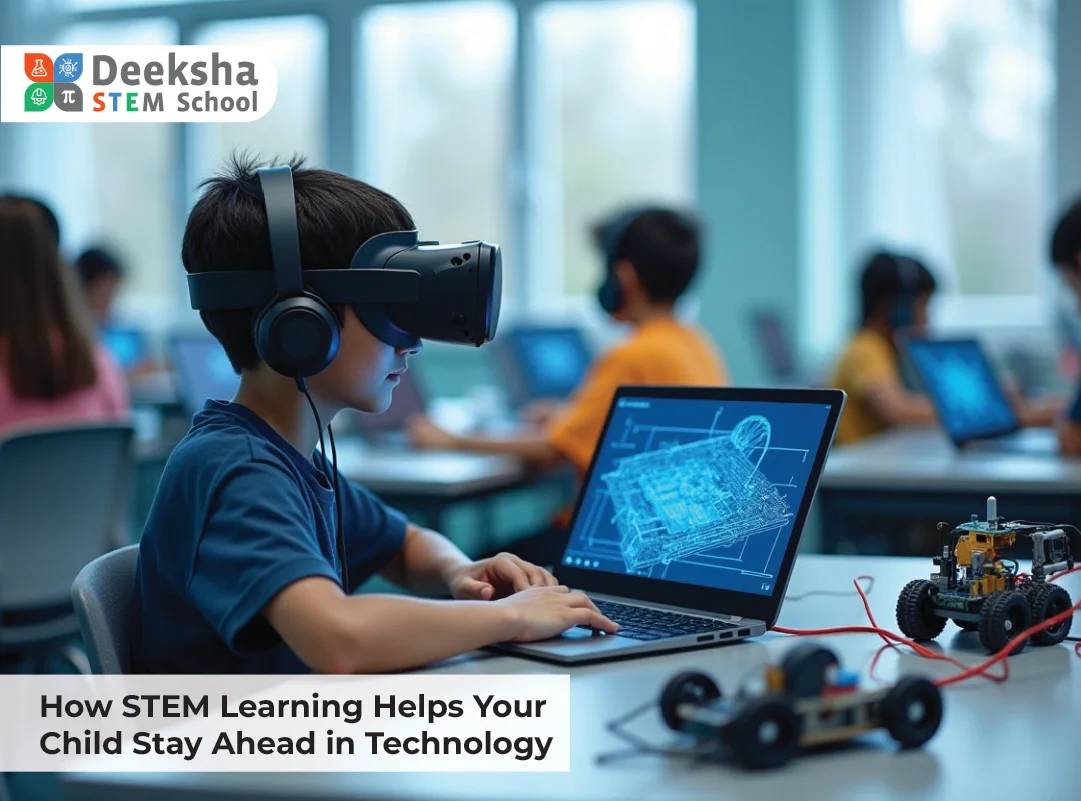Introducing Your Child to Coding, Robotics, and Other STEM Technologies

Introduction
In today’s technology-driven world, skills in coding, robotics, and other STEM (Science, Technology, Engineering, and Mathematics) technologies are becoming essential for children. Introducing these subjects at a young age can help spark an interest in technology and innovation, equip children with problem-solving skills, and prepare them for future career opportunities. By providing a foundation in these areas, parents can empower their children to navigate and excel in an increasingly digital world.
This guide explores practical ways to introduce children to coding, robotics, and other STEM technologies, providing tips on how to make learning engaging, accessible, and fun.
Why Introduce Your Child to Coding, Robotics, and STEM Technologies?
Building Problem-Solving Skills and Creativity
Coding, robotics, and STEM activities encourage children to think critically, solve problems, and use creativity. Learning to code, for example, involves logical thinking and sequencing skills, while working with robotics involves understanding how mechanical and electrical components interact.
- Benefits for children:
- Enhances logical reasoning and problem-solving abilities.
- Fosters creativity through designing projects, games, or robots.
- Develops persistence and resilience, as children learn to troubleshoot and improve their projects.
Preparing for Future Careers
The future job market will heavily favor individuals with skills in technology. By introducing your child to coding, robotics, and other STEM technologies early, you are setting them up for success in high-demand fields such as software development, data science, artificial intelligence, and engineering.
- Real-world relevance: As many future careers will require proficiency in STEM fields, giving children an early start can make them more competitive in the workforce.
- Transferable skills: Beyond specific technical skills, coding and robotics also teach valuable soft skills like project management, teamwork, and critical thinking.
Encouraging Lifelong Learning and Adaptability
Technology evolves rapidly, and learning coding and robotics encourages children to adopt a mindset of lifelong learning. As they encounter new tools and technologies, children who are familiar with STEM concepts will be more adaptable and open to learning new skills.
Getting Started with Coding for Kids
Begin with Visual Programming Languages
Visual programming languages use a drag-and-drop interface that allows children to learn coding concepts without having to memorize complex syntax. This approach is ideal for younger children who are just getting started.
- Recommended platforms:
- Scratch: Developed by MIT, Scratch is one of the most popular platforms for introducing coding to children. It allows users to create stories, animations, and games using a block-based programming interface.
- Blockly: Another visual programming platform that uses block coding to teach programming fundamentals. It can serve as a stepping stone to text-based coding.
Introduce Text-Based Coding as They Progress
Once your child is comfortable with visual programming, gradually introduce them to text-based programming languages like Python or JavaScript, which are widely used in the real world.
- Benefits of learning text-based coding:
- Builds a stronger foundation in computer science principles.
- Prepares children for more advanced coding challenges and real-world applications.
- Offers versatility, as these languages are used across multiple industries.
Use Game-Based Learning to Make Coding Fun
Many platforms gamify the learning process by turning coding into a game with challenges and levels. This makes learning more engaging and encourages children to continue progressing.
- Popular coding games for kids:
- CodeCombat: A platform where players use real coding languages to solve puzzles and progress through levels.
- Tynker: Offers coding courses and games for different age groups, teaching both block-based and text-based coding.
Introducing Robotics to Your Child
Start with Beginner-Friendly Robotics Kits
Robotics kits designed for children make it easy to get started with building and programming robots. These kits often come with step-by-step instructions and built-in challenges that make learning intuitive and engaging.
- Recommended kits:
- LEGO Mindstorms: Allows children to build and program their own robots using LEGO bricks. The kit includes sensors, motors, and a programmable brain.
- Dash and Dot: Robotics kits designed for young children. They use visual programming apps to control the robots and complete fun challenges.
- VEX Robotics: Offers a range of kits that introduce kids to robotics and engineering concepts, with options for beginners and more advanced users.
Participate in Robotics Competitions
Robotics competitions encourage children to apply their skills in a competitive and collaborative environment. Events like FIRST LEGO League or VEX Robotics Competitions provide opportunities for children to work in teams, solve real-world problems, and develop leadership skills.
- Benefits of competitions:
- Fosters teamwork and collaboration as children work together to solve challenges.
- Encourages creativity in designing and programming robots.
- Provides real-world experience in project management and technical problem-solving.
Incorporate DIY Projects and Challenges
Encourage children to explore their creativity by designing their own robotics projects. Simple DIY challenges, such as building a line-following robot or creating an obstacle course for their robot to navigate, can deepen their understanding of robotics concepts.
Exploring Other STEM Technologies
Introduce 3D Printing and Design
3D printing is an exciting technology that allows children to bring their ideas to life. It teaches them about design, engineering, and problem-solving, making it a valuable addition to STEM education.
- How to get started:
- Use free 3D modeling software like Tinkercad to design simple objects.
- Introduce children to the basics of 3D printing by printing small models they design.
- Encourage them to create prototypes and iterate on their designs.
Experiment with Drones and Virtual Reality (VR)
Drones and VR offer exciting ways to explore STEM concepts, from aerospace engineering to digital simulations. These technologies provide new perspectives and immersive experiences that make learning more engaging.
- Benefits for children:
- Drones: Teach principles of aerodynamics, physics, and even coding through programming flight patterns.
- VR educational apps: Allow children to explore environments such as the deep sea, outer space, or even the human body, making abstract concepts tangible.
Use Augmented Reality (AR) for Interactive Learning
AR adds a digital layer to the real world, enabling children to interact with digital objects in a physical space. This can make learning subjects like math, science, or history more engaging and hands-on.
- AR learning apps for kids:
- Merge Cube: Allows users to hold a hologram in their hand and explore various subjects in an interactive way.
- Quiver: An AR coloring app that brings children’s drawings to life, making it fun to learn about animals, space, and other subjects.
Tips for Parents to Support STEM Learning
Create a STEM-Friendly Environment at Home
Designate a space where your child can explore STEM activities, whether it’s a corner for building and coding or a table for assembling robotics kits. Stock the area with STEM-related toys, books, and materials to encourage ongoing exploration.
Encourage a Growth Mindset
A growth mindset emphasizes the idea that abilities can be developed through dedication and hard work. Encourage your child to embrace challenges, learn from mistakes, and persist in solving difficult problems.
Incorporate STEM into Everyday Activities
Look for ways to introduce STEM concepts into daily routines. For example:
- Cooking together can teach children about chemistry and measurements.
- Gardening can introduce them to biology and ecology.
- Building DIY projects can teach principles of engineering and physics.
Conclusion
Introducing your child to coding, robotics, and other STEM technologies provides them with a strong foundation in critical skills that are essential in the 21st century. By starting with age-appropriate tools, participating in hands-on projects, and exploring new technologies like 3D printing, drones, and VR, parents can make STEM learning fun, engaging, and impactful.
Empowering children with these skills not only prepares them for future career opportunities but also fosters a lifelong passion for innovation, problem-solving, and learning.




